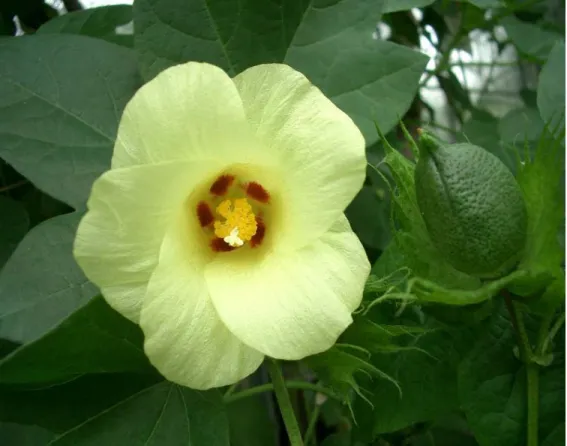The earliest civilization known to have spun and woven cotton was the Harappan in the Indus Valley of Pakistan (2300–1750 BC), and for many centuries the cotton plant was known outside of India only in traveller's tables. The original Asiatic cotton that could be cultivated belongs to the species G. Vernacular: English Sea Island Cotton, Egyptian Cotton, Brazilian Cotton, Peruvian Cotton, Kidney Cotton. The center of origin of this group is tropical South America, especially Colombia, Ecuador and Peru.
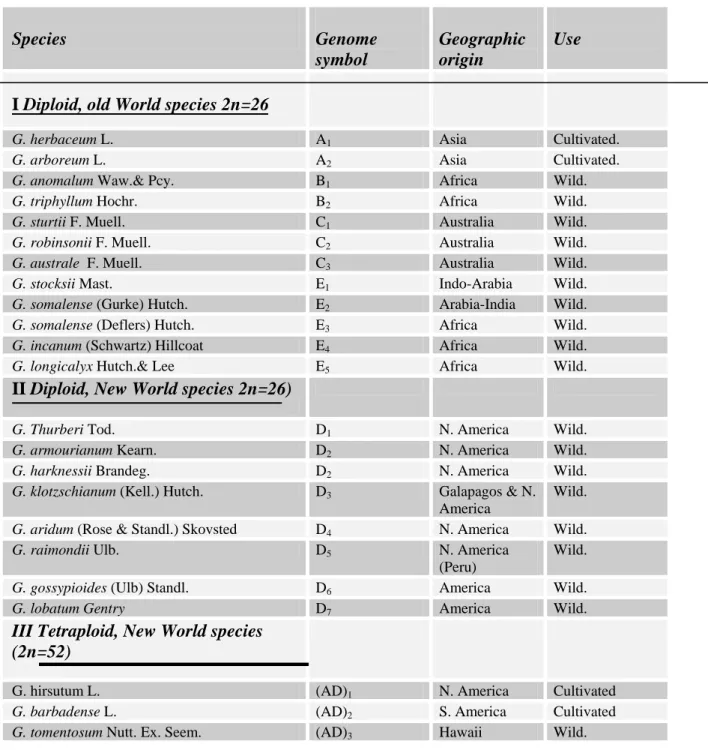
Cotton Ginning and Baling Industry
Uses of Cotton
Feed for (beef cattle, dairy cattle, sheep, horses and mules) Fertilizer (mulch and soil improver).
DISEASES AND PESTS
FLAX
In Peninsular India it is usually sown in early October, while in the North in the Gangetic alluvium it is usually sown in November. It is very necessary that the straw used in the fiber production should be quite long and uninterrupted.
JUTE
Since jute is a fibrous plant, the fiber yield depends on the vegetative growth of the plant. Fertilization, weeding and thinning are carried out during the first two months of the harvest.
KENAF
Beginning with the seedling stage, the jute crop is prone to attack by various diseases mainly caused by fungi, wilt caused by Sclerotium rolfsii, black band caused by Dipldia corchori seedling blight and collar rot caused by Ozonium spp. Dry rot caused by Macrophomina phaseoli, leaf spot by Cercospora hibisci, leaf blight by Phyllosticta hibisci and stem rot by Diplodia hibiscina.
COIR
The crushed husks are subjected to high steam pressure and the fiber comes loose from the steam chambers. Lignin and hemicellulose, which form the cementing materials of fiber cells, increase with the age of the fiber and the pectin decreases.
The chemical composition of coconut husk and coir fibre is as follows
Coir yarn has proven to be an ideal lead for hop wines used in breweries in the U.S. Coir bags are used in tea estates for collecting tea leaves and for transport: and also for lifting coal from mines. Coir yarn is used to make fenders which are attached to ships and boats to prevent collision and impact.
KAPOK
Coal waste has recently been used in the production of Coirolite by incorporating with resins and other ingredients through the usual techniques of plastic manufacturing. The floss is taken with seeds, dried in the sun and the seeds separated by beating the dried material with sticks.
SUNN HEMP
The crop is almost entirely cross-pollinated by bees, which are exploited by an intricate pollen release mechanism involving dimorphic stamens. Harvesting of the crop can be done when the pods are just setting or when the pods are drying up.
RAMIE
Japan has made significant progress in the cultivation of Ramie and also in the technique of processing the fiber. The cut stalks are decorated by hand as in India and China, or by machinery as in America, and the fiber is stripped off.
MANILA HEMP
The plant is reported to grow well in the Andamans, but little attention seems to have been paid to its cultivation and fiber extraction. The plant thrives in well-drained, moderately rich loam at an altitude of 60-150 cm. Under the microscope, the fiber is seen to be composed of cellular elements that are unusually long, averaging about 2 cm.
SISAL HEMP
Hemp is used for the manufacture of fine rope, twine, tarpaulin, sails and carpet yarns. The use of hemp in ropes, ropes and ropes has declined, its place being taken by the hard fibers. In recent years it has also been used for the production of coarse materials, etc.
ROSELLE
The stem is tied in bundles and left in the field for 3-4 days and boiled as in the case of H.cannabinus. In Sri Lanka, the bark is removed from the cortex, tied into bundles and put into tanks. Roselle fiber is used for sacks, cordage, rope, fishing nets and generally for all purposes for which jute is used.
CONGO JUTE
The fiber is soft, pale yellow, and is used for the manufacture of ropes, carpets, lessa, etc. Asclepiadaceae Used in the paper industry and also in textiles, used for stuffing pillows, etc. T Liliaceae leaf fiber is used for the manufacture of bowstrings, (Bowstring hemp) twins and ropes .
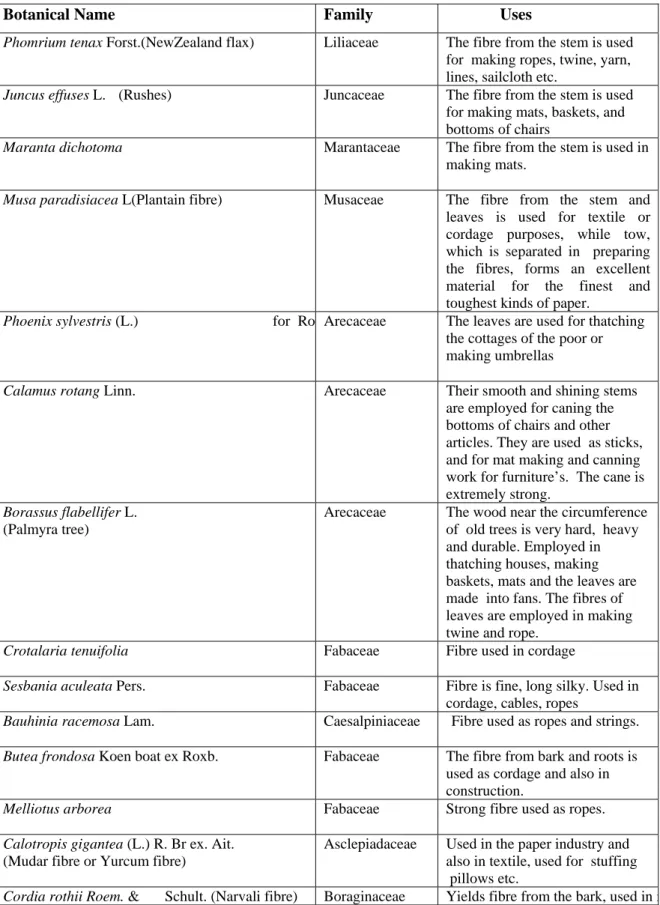
RUBBER
The rapid growth of the Hevea rubber tree due to its high and consistent yield over a long period has made it an undisputed species and has become the main source of natural rubber worldwide.
Botanical Name
Family Common Name
Organ yielding rubber
Origin
It is by far the most important species producing ninety-nine percent of the natural rubber produced in the world. Chemical analysis of gum from wild trees of several species has shown that, in general, gum from H. For best growth the Hevea tree requires an evenly distributed rainfall of 175-250 cm per year, a temperature of 24-350 C. , a high atmospheric humidity, fairly deep well-drained clay soil with a pH value of 4.5-6.0. The tree grows well in well-drained mountain areas and reaches a height of 35-.
Rubber
The latex vessels in the bark of Hevea do not rise vertically, but have a slight slope to the right. The latex is collected in a large container and a small amount of ammonia is added to avoid pre-coagulation of the latex. The rubber content of the latex is estimated by measuring the specific gravity of the latex and estimating the rubber content on the basis of the relative specific gravity of the main components.
Rubber industry
Its water resistance has been used in raincoats, rubber with other fiber combinations in elastic clothing, etc. It was used in the manufacture of pillows, bathing caps, shoes, children's pants, hospital bed sheets, heating pads, gloves, aprons, thermophores, ice caps, rubber tube catheters, hard rubber sofa equipment, enemas.
FUEL WOOD
Today's technology has provided alternative sources of energy, but wood used as fuel still ranks highest among all uses of wood in terms of volume. The burning value of wood varies greatly due to its density and moisture content. Two kilograms of such firewood will be equal to one kilogram of high-quality coal in terms of heat energy produced.
Peat
Coal
Petroleum
Implications of wood as fuel
Growing trees for firewood is therefore one of the options for overcoming this lack of firewood in the coming years. Growing trees for commercial stock has considerable advantages, just as it is more than feasible to grow them for your own small-scale home use. In the countryside, trees were usually grown for energy needs and balance.
TIMBER YIELDING PLANTS
However, other most sought after wood for various applications is obtained from rosewood (Dalbergia latifolia Roxb.), Andaman padauk (Pterocarpus dalbergioides), red sanders (Pterocrpus santalinus) and sandalwood (Santalum album L.). Timber value was also given to some of the trees like mango, jackfruit, acacia, rubber tree etc. Wood is considered a very strong structure based on its weight, where it scores over iron, five to six times stronger than cement.
Anatomical characters of wood
The secondary xylem of dicots is significantly more complex, consisting of different types of cells, such as vessels, tracheae, fibers, xylem parenchyma, rays of various shapes and types, which are often characteristic of certain species. The first three components run longitudinally, while the rays run horizontally, and the xylem parenchyma may occur as an occasional longitudinal cell or as the main or exclusive component. Many Indian forest trees are very valuable as they provide timber for various purposes.
Chemical Constituents of wood
Structure of wood
The arrangement and size of the vessels are used in the characterization of wood. The increase in pore size from autumn wood to spring wood is gradual and it is not possible to draw a dividing line between the two. From a phylogenetic point of view; storied wood is considered more advanced than non-storied wood.
Wood properties
Seasoning of wood: The process of drying wood (so that it loses its water content) before it is used for any purpose is called seasoning. Wood used for building ships and boats should be treated with fish oil, tar, etc. to prevent attack by marine organisms (Fungi, etc.). Wood used for packing boxes: The wood used for this purpose should be light as it can be easily transported.
List of Indian timber trees
Botany of Bamboo
Bamboo, a member of the grass family, is one of the most useful and versatile plants in the world. The largest user of bamboo in India is the paper industry, which consumes a significant portion of the total annual bamboo production. It is one of the very versatile resources that meet the daily needs of agricultural societies across the globe.
Species and Distribution
Stems erect, 4-7 m high, 1.2-2.5 cm in diameter, grayish green; nodes armed with a circle of conical spines.
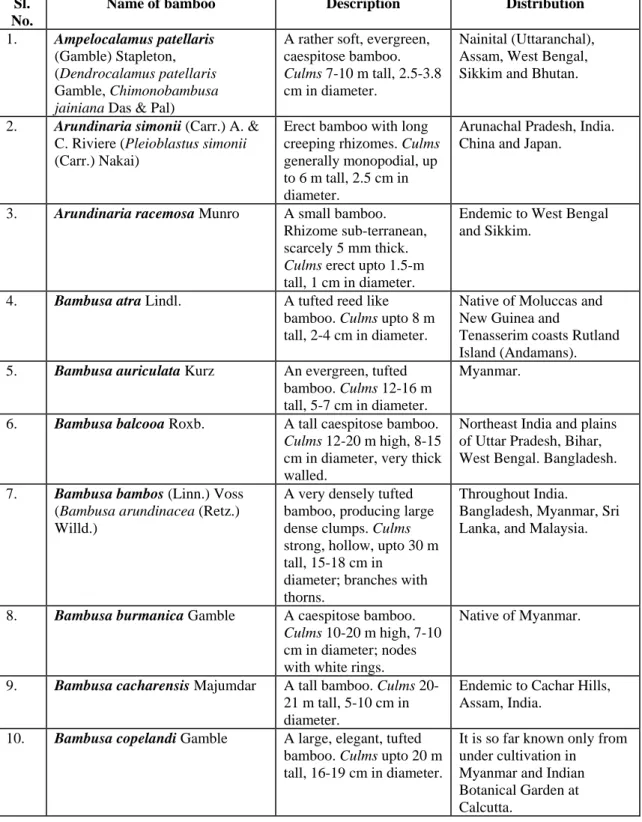
Wood structure
Genetic Diversity of Bamboo
Ecology & Conservation of Bamboo
Some of these centers are: i) Forest Research Institute, Dehra Dun (37 species). ii) From Vigyan Kendra, Chessa, Arunachal Pradesh (35 species). iii) Arunachal Pradesh Center Bamborium, Bashar, Siang District )31 types) (iv) Botanical Garden, Punjab University, Chandigarh (20 species). v) Kerala Forest Research Institute, Peechi, (Sub-centre at Nilambur) (21 species) (vi) Kerala Forest Research Institute, Peechi, (Sub-centre at Palappilly) (51 species) (vii) Kerala Forest Research Institute Campus, Peechi, Kerala ( 13 species). viii) Tropical Botanical Garden and Research Institute, Palode, Kerala (32 species) (ix) Institute of Forest Genetics and Tree Breeding, Coimbatore (26 species) (x) Forest Division, Begur, Wynaad Division, Kerala (12 species).
Production and Propagation
The tops of the culms are cut and sealed with soil or cow dung to prevent rotting. Weeding is done during the first season. ii) Rhizome cuttings: Parts of fresh living rhizomes from the previous year are about 15-30 cm long and contain at least one bud. Seeds that fall on the ground germinate immediately after the start of the rainy season.
Bamboo Utilisation
The origins of this rural craft can be traced back to the dawn of civilization, when man began to grow food crops thousands of years ago. Now, bamboo handicrafts are spread in all rural areas of the country, feeding millions of traditional workers. Mats made with skins from the outside of bamboo are used for the outer wall after applying a layer of coal tar to the outer surface for protection.
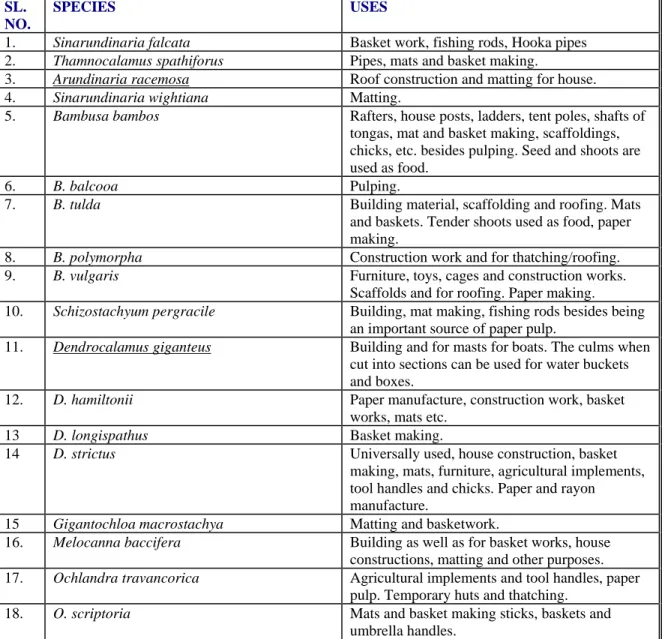
Bamboo Markets
Handicrafts: A large number of cottage industries like table maker, bamboo goods, trays depend on bamboo as raw material. Bamboo is a raw material not only for large industries, such as paper and pulp, but also for homes and small industries. A large number of people from the poorest sections of society depend on bamboo for their daily livelihood.
Policy
West Bengal: Forest Protection Committees, set up under Joint Forest Management, which assist the forest department in forest protection and regeneration, are given 25% of the net proceeds from the sale of fruits. Supply is made at reasonable rates but not less than the rates prescribed by the forest department. In fact, the current national forest policy has clearly stated that meeting the needs of local communities will take precedence over the commercial use of such species.
Legislation
Himachal Pradesh: The local population has the right to fulfill their bonafide requirements from the bamboo bearing forest compartment. For the residents whose requirements cannot be conveniently met from these compartments, bamboo supplies are made from forests other than the closed groves. Besides, bona fide householders and cultivators of the villages adjacent to reserved forests were also entitled to free permit to the extent of 250 pieces of bamboo per family per year.
To promote agroforestry and trade, many countries are liberalizing transit restrictions for these products.
